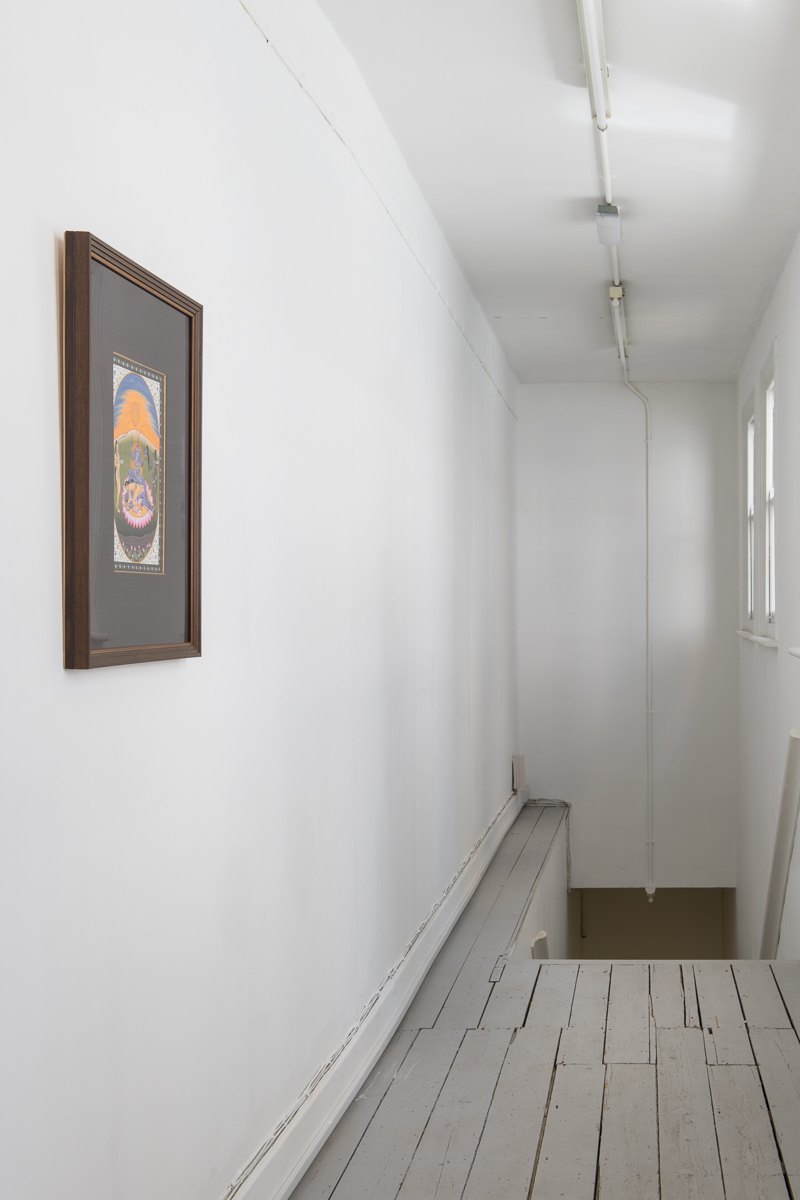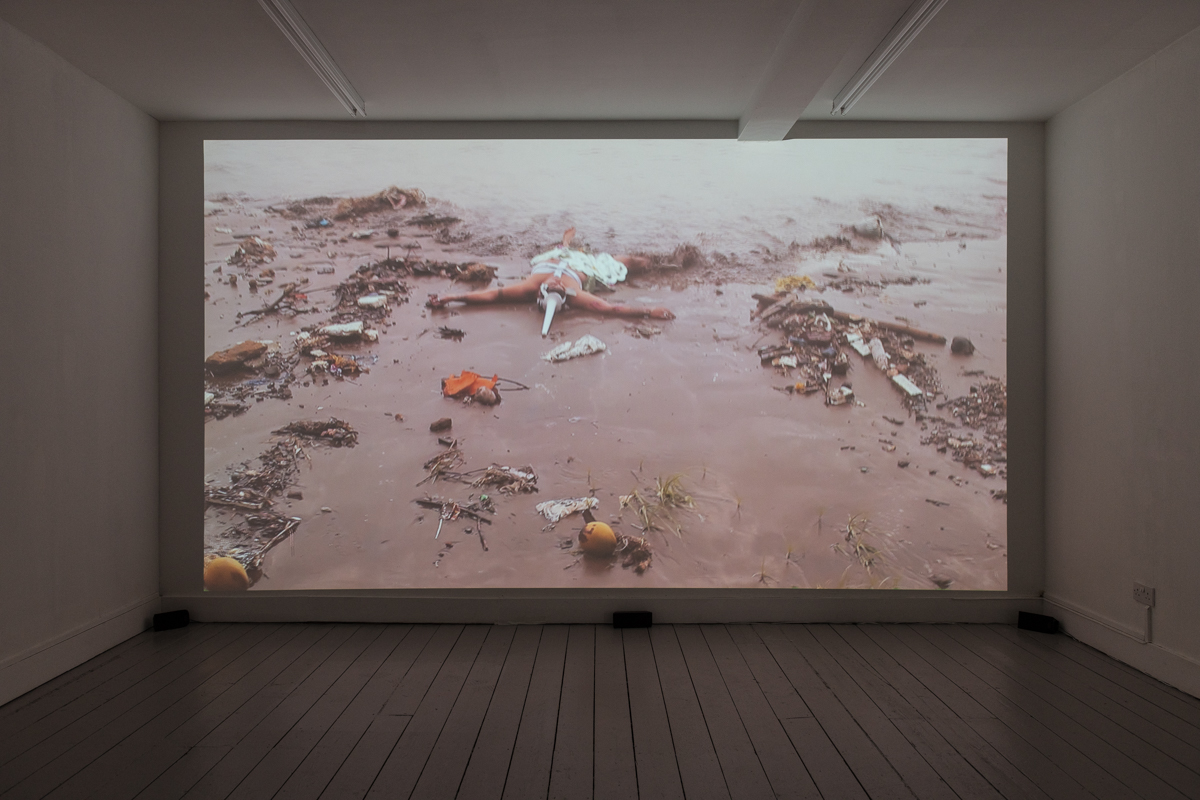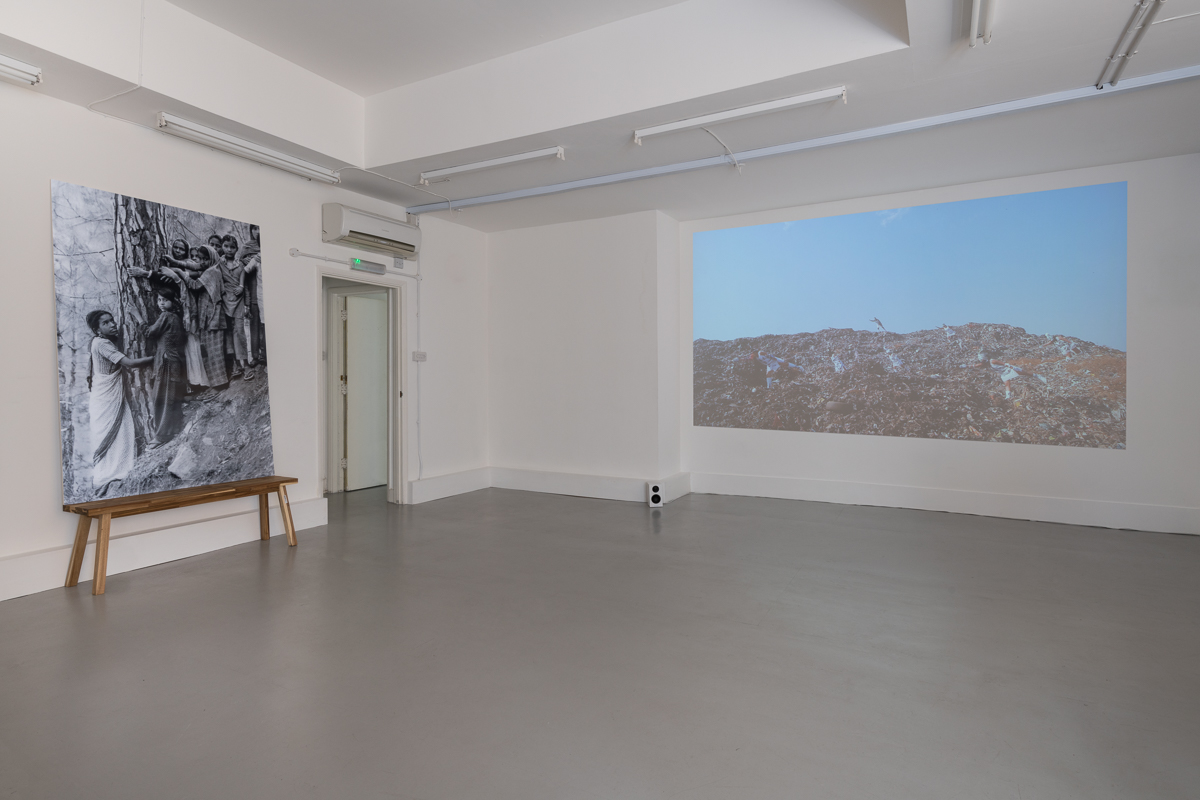Tejal Shah AS IT IS
OPENING THURSDAY 31 MAY, 6–8:30pm
1 JUNE – 15 AUGUST 2018
The universe is not only queerer than we suppose, it is queerer than we can suppose.
-- Evolutionary biologist J.B.S. Haldane
Tejal Shah presents a selection of new works on paper alongside their 5-channel video installation Between the Waves (2012). Informed by queer, feminist and Buddhist thought, Shah explores the interdependence of all life and the importance of care in times of ethical and ecological precarity.
Daria Khan founded Mimosa House with the curatorial vision to support artistic experimentation and collaboration. Within this framework, Tejal Shah invites fellow artists Anne Nora Fischer and Mo Maja Moesgaard; together they present an on-site collaboration lasting ten days.
***
DARIA: As it is – can you tell us more about the title of the show?
TEJAL: While the title of the show sounds so matter-of-fact and simple, it points to a very profound and subtle doctrine. In the Buddhist non-dualist parlance, reality is often referred to as, ‘as it is’. There is a discrepancy between how phenomena appear to us and how they exist in fact. When one directly experiences reality, one begins to transcend the duality of self and other as intrinsically, independent entities.
‘As It Is’ is also the title of a two-volume collection of teachings by Tulku Urgyen Rinpoche who was considered one of the greatest Dzogchen scholar-practitioners of the 21st century. So, the title situates us quite well given the works being presented, my current research interests and my process.
DARIA: The first work we encounter when we enter the exhibition is a print work, She lost her mind, which queers a miniature painting of the goddess Chhinnamasta, the self-decapitated tantric deity who is full of paradoxes: she symbolises self-sacrifice and sexual energy, violence and empathy, and also represents female empowerment through unbecoming and incoherence. This undoing of self makes me think about how Gayatri Spivak talks about bridal suicide in 19th century India (‘Can the Subaltern Speak?’ 1988). I’m interested in how you view your work in the context of decoloniality, and how your works become a tool for political and spiritual emancipation?
TEJAL: ‘Is it possible to end violence?’ – this is one of the central questions that propels me, and if the answer is yes, then automatically the next question that follows is, how? What are the possible pathways? Where violence ends, love and understanding begin and I doubt that any meaningful emancipation is possible without love and understanding. With this as the backdrop, all my works are also an invitation for mind transformation. I am drawn to work at the edge of things, always pushing the boundaries of our assumptions and conventions. In my earlier works, it was the edge between binary and non-binary or normative and non-normative; now, it’s the edge between duality and non-duality.
Though binary and duality may sound synonymous, there is a significant shift in meaning in the way I am deploying these sets of dichotomies here. It’s difficult to explain this in a few words but I will try. It’s like this – one can dismantle regressive conventions and believe that one is freed from conventions altogether but one may have only succeeded in installing more progressive conventions instead. On the other hand, there can be a tectonic paradigm shift. For instance, what if by engaging in a dialectic using logic, a conviction grows in you that – convention neither ‘is’, nor ‘is not’, nor ‘both’, nor ‘neither’ – then how does this affect your being? Approaching non-duality (on the basis of Middle Way Consequential philosophy) necessitates such a paradigm shift.
There is great freedom in this because one is totally groundless, freed from all forms of identification allowing one to go past the cycles of fear, hope or indifference. This is what spiritual emancipation implies and to me it is an all- encompassing freedom. As artists, we are also working on behalf of society (self-appointed of course). There is a process of distillation that transpires through our practice and sometimes the so-called outcome is an essence, whose smell can heal something.
DARIA: I perceive the universe depicted in the 5-channel video installation Between the Waves as a promise of a long-anticipated post-gender and post-anthropocene world of care, cooperation and love, and on the other hand, a premonition of an environmental dystopia where the air became a suffocating mist and the soil and water are composed of waste. A family of hybrid creatures are engaged in a ritual trying to preserve what’s left. Could you explain some of the symbols and references that appear in the work?
TEJAL: Between the Waves is full of sensual, poetic, heterotopic landscapes within which I place my hybrid creatures who inhabit personal/political metaphors – embodiments of the queer, eco-sexual, inter-special, technological, spiritual and scientific. Their activities feel archaic and futuristic at the same time, primitive but filled with urgency and agency.
Multiple historic and mythological references are layered, woven and problematised. That which is perhaps most obvious is the reference to Rebecca Horn's Einhorn (Unicorn), which in turn references Frida Kahlo’s painting, The Broken Column. Horn has described the subject in Einhorn as “very bourgeois” - the (female) creature walks elegantly, more like a mythical creature than an animal, naked but asexual. My own subjects, however, are neither bourgeois nor asexual. They are base and unselfconscious, embodying a ritualistic and intuitive exploration, unapologetically seeking closeness.
Another symbolism appears in the form of totem animals associated with each of the five sections of Channel 1, Between the Waves, pygmy sea horses being one of them. Sea horses have so many queer quirks – they are among the only animal species on earth in which the male bears the unborn young. Pygmy sea horses excel at camouflage, are smaller in size than our fingernails and unlike many of the greater seahorses, which have monogamous mating systems and form lasting pair bonds, the dwarf ponies are relentlessly polygamous and their love life usually consists of a series of one-night stands. From a hetero-normative, gender binary perspective, nature should be the most unnatural thing we could encounter. As evolutionary biologist J.B.S. Haldane astutely observed, “the universe is not only queerer than we suppose, it is queerer than we can suppose.”
DARIA: Another work you produced for As it is is a lenticular print based on a famous photograph from the Chipko movement – a non-violent protest against deforestation in which people hugged trees to prevent them from being cut. Chipko was inspired by the incidents that lead to the spontaneous protests by Bishnois and the famous Khejarli massacre dating back to the 18th century in Rajasthan. Chipko became an affective tool for ecological and spiritual resistance. Your earlier works were engaged with social activism and gender struggle, while your recent works transmit subtle gestures of resistance and healing. Could you tell me about this transition and how the study of the non-western philosophy has influenced your work?
TEJAL: I think I have already spoken a bit about this transition in my previous answers. To add further, even though most of my education and the art milieu that I inhabit are dominated by western knowledge production, I always had a niggling feeling that something profound was missing in these systems. A few years ago, my interest in non-dualism brought me to Tibetan Buddhism and I consider myself very fortunate to have come in contact with some outstanding scholar-practitioners of this tradition. I am very struck by what they embody – a combination of exceptional intelligence, deep wisdom, impeccable ethics and a vast ocean of kindness. It’s a very different potential of human possibility shown through lived example. I never had such a mirror to reflect with.
Armed with an embodied wisdom, a thorough understanding of the workings of consciousness and practices of mind training, one can be empowered to choose non-harm or goodness over unethical or narrow self-referential habitual tendencies. My contact with Nalanda Buddhism has undoubtedly influenced my work. I am further energized to explore collaborations in the form of process-led and performance based projects, with an educational bent that allow community involvement and public engagement. I try to bring simplicity and non-resistance in my approach and there is a lot more space for failing, for owning up and revealing more.
DARIA: In parallel with your solo show, you’ve invited Danish artists Mo Maja Moesgaard and Anne Nora Fischer to collaborate in transforming Mimosa House into a 10 days residency where a series of workshops will take place. What are you planning to explore in the workshops and how do you see public’s participation?
TEJAL (with inputs from MO and ANNE): First and foremost, this invitation is an invitation to engage with each other, share, explore, experiment, fail, do it again, learn/un-learn, together in a constellation and we’re all very excited to have this opportunity thanks to the curatorial vision you have laid down for Mimosa House.
During our residency, we want to explore the narratives of queer and post- queer resistance and human and more-than-human relationships through performance, approaching these through questions such as: If love and care are the radical basis, then what kinds of embodied and deviant knowledges can we co-produce and share? How can we live ethically and non-violently, here and now? How do we protest? What happens when we look at questions relating climate and ecological transition through the figure of the (queer) drag?
Materially, we are drawn to refuse and crap. “Garbage does not strictly refer to an object, but is a jumble of inexactness...it seems to lack conventional referents...garbage is the remainder of the symbolic order proper” (John Scanlan, On Garbage).
Retaining openness throughout the process, our on-site residency will be a hybrid workspace, open studio in public hours and workshop space. Alongside the thematic workshops, there will also be screenings, discussions, performances, readings and other gestures of sharing. Sometimes we will go out on research field trips and meet with experts and at other times invite them to come to Mimosa House for sharing sessions. Throughout the residency, there will be several performed ‘outings’ engaging with public and public space.
Saturday 2 June 2018, 1pm
Unbecoming & Queer Loving - A Proposition from Non-dual Buddhist Philosophy and Practice
Workshop led by Tejal Shah.
Sunday 3 June 2018, 4pm
Practicing togetherness
Workshop led by Anne Nora Fischer
Thursday 7 June 2018, 1pm
Wave-Particle Duality - From Solidity to Interdependence Workshop
Workshop led by Jaya Ramchandani
The exhibition is kindly supported by
Tejal Shah (b.1979, lives in New Delhi) studied at the Royal Melbourne Institute of Technology, Australia, and at the Art Institute of Chicago, United States. Shah is interested in layered propositions on the relationships between interspecies, ecology, gender, post-porn, sexuality and consciousness. They think of themselves as some kind of artist working on some kind of nature. Their works have been exhibited widely in museums, galleries, and film festivals including the Kunstmuseum, Wolfsburg (2018), Kunsthaus Hamburg (2017), the Office for Contemporary Art, Oslo (2016-17), Whitechapel Gallery, London (2014), dOCUMENTA 13, Kassel (2012), Centre Pompidou, Paris (2011), Serpentine Gallery, London (2009) and Tate Modern, London (2006), among others.
Anne Nora Fischer (b.1988, Copenhagen, Denmark) holds a MFA from The Royal Danish Academy of Fine Arts and has studied “Dance and Choreography” at The Danish National School of Performing Arts and “Art and Social Practice” at Portland State University. Fischer works in a field between choreography and visual art with large-scale performances performed with professional dancers, artists, friends, lovers and the audience themselves.
Mo Maja Moesgaard (b.1980, Varde, Denmark) is an artist and queer feminist activist whose practice is driven by political questions and frustrations, as well as an enthusiasm for drawing and animation. Throughout their practice, Mo has a strong desire to work across differences and wishes to form alliances and create meaningful co-productions. Drawing and animation's position within popular culture and political activism is essential for Mo, who sees their work as equally linked to DIY/DIT political cultures and stories, as to the art institution.







































